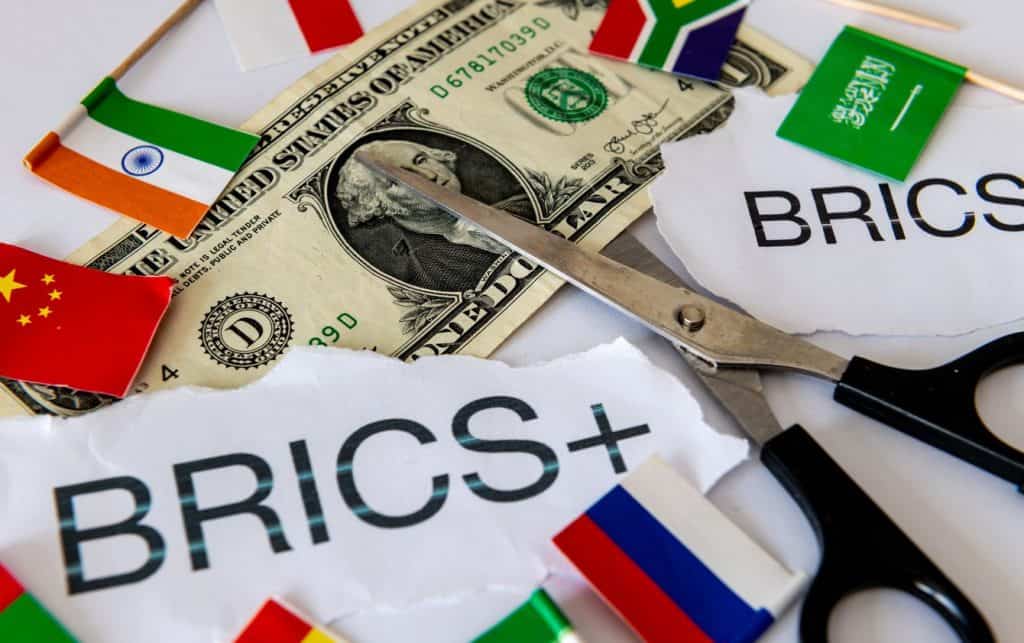
The BRICS nations continue to make progress on the road towards de-dollarization as Valentina Matviyenko, the Speaker of Russia’s Federation Council, recently announced that the trading bloc has made significant progress on the BRICS digital payment platform as part of their efforts to revolutionize global financial transactions.
“The creation of the independent financial payment platform BRICS Bridge, a standalone mutual payment system on a firm joint platform, is now being discussed within BRICS,” Matviyenko said at a press conference on August 1, as reported by TAAS. “I have spoken both with the Central Bank and the Finance Ministry; things are moving along nicely. It is being discussed with colleagues from central banks, finance ministries of all BRICS countries, including new members.”
During the BRICS Summit held in Johannesburg in 2023, six new countries were admitted into the bloc, including Argentina, Egypt, Ethiopia, Iran, Saudi Arabia, and the United Arab Emirates (UAE), underscoring the group’s growing influence on the world stage.
Matviyenko also noted that Russia, in its role as the BRICS chair, has been the driving force behind the BRICS bridge development.
“If it works, it will be a bombshell globally, in the best sense,” she added.
Matviyenko said she hoped this issue would be considered at the summit of BRICS heads of state in Kazan in October.
“Perhaps it will be approved then, or at least the discussions will lead to a decision on when and in which format it should be finalized, meaning this is no longer just an idea; it is moving forward in practice,” she said.
The need to create an intra-BRICS payment system has become vital for Russia and its trading partners amid ongoing sanctions and Russia’s disconnection from SWIFT. Matviyenko said the Bank of Russia has already developed its own payment system, which many countries have already joined. “This shows that there is a light at the end of every tunnel,” she added.
One of the biggest developments on this front came in July when India and Russia announced a new partnership that will see their respective payment systems – India’s RuPay and Russia’s MIR – integrated to allow for seamless cross-border transactions without the need for U.S. dollars.
Matviyenko also used the opportunity to highlight that the U.S. dollar has seen its standing diminished in recent years amid the non-stop increase in the U.S. national debt and the rise in countries opting to perform mutual settlements using their national currencies.
“I hope that the system that has been created by BRICS will become a trend, an example that not only BRICS nations, but many other countries as well will join later,” she said, noting that the issue is also being discussed by the Shanghai Cooperation Organization (SCO).
Work on the BRICS independent payment system, which will operate using digital currencies and blockchain, was first revealed in February when Russia’s Finance Ministry announced that the Bank of Russia, along with several BRICS partners, were working to create the BRICS Bridge multisided payment platform as part of their efforts to improve the global monetary system.
“By the end of the year, the Russian Finance Ministry and the Bank of Russia together with partners within the [BRICS] association, will draft a report for the leaders of the BRICS countries on improving the international monetary and financial system, which will contain a set of initiatives and recommendations,” the Finance Ministry said. “Developmental work based on the report will result in a number of practical initiatives, with the BRICS Bridge platform potentially becoming one of them.”
“The issue is about creating a multisided digital payment platform,” they added. “It will help bring the financial markets of the BRICS member states closer and increase mutual trade turnover.”
“The gradual integration of the new BRICS member states into the work of the financial tracks and strengthening of cooperation at the expert level was noted as being one of the crucial tasks for 2024,” the ministry said.
In March, Kremlin aide Yury Ushakov provided additional information on the bloc’s plans, calling the development of a BRICS payments system a “Contingent Reserve Arrangement,” and noting that it would be based on digital currencies and blockchain.
“We believe that creating an independent BRICS payment system is an important goal for the future, which would be based on state-of-the-art tools such as digital technologies and blockchain,” Ushakov said. “The main thing is to make sure it is convenient for governments, common people, and businesses, as well as cost-effective and free of politics.”
He noted that in the 2023 Johannesburg Declaration, the leaders determined that BRICS countries needed to increase settlements in national currencies and strengthen their correspondent banking networks to secure international transactions.
“Work will continue to develop the Contingent Reserve Arrangement, primarily regarding the use of currencies different from the US dollar,” Ushakov said.





























